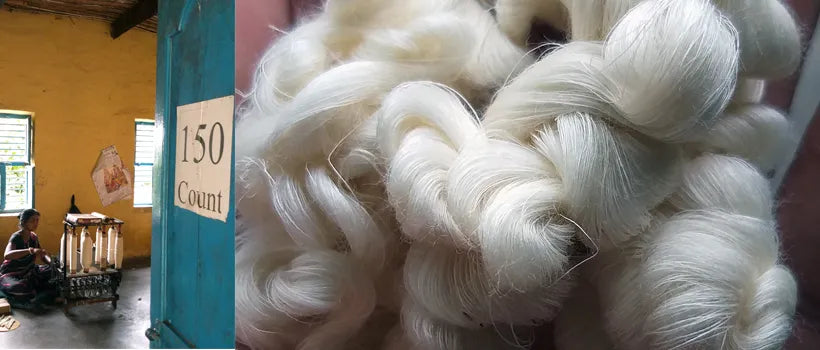Written By,
Shwetasree Majumdar
Managing Partner, Fidus Law Chambers ( India)
Noida
My love for handmade textiles dates back to when I wasn’t really conscious of it.
It probably started in the sultry summer afternoons in Kolkata when I watched my grandmother tear up the borders of her sarees that were no longer wearable, and stitch them together on her Usha sewing machine into the blankets and coverlets that kept me warm in winter. Those were the kanthas that smelt of an innocent time and when I snuggled in them, they reminded me of my grandmother’s warm hug.
Or maybe it started when I watched my mother carefully iron her few “good sarees” after having worn them for the umpteenth time, before consigning them to the recesses of her cupboard in mulmul saree bags with mothballs for company.
Our mothers and grandmothers re-wore their sarees until they could be worn no more. And then, using the creativity that is the forte of Indian homemakers, they reimagined those sarees as blankets, bags, cushion covers and so on. Those were simpler times when I lacked the vocabulary to identify the origin and lineage of a saree but had sufficient understanding of what was precious.
When I started to earn my own money, I naturally gravitated towards handlooms – it was as if this was hard wired into my DNA. Our grandmothers were part of the generation that took pride in wearing handspun and handwoven cloth and shunned all things mill-made with patriotic fervour. They sewed, darned, embroidered and I respected others who did the same. A handmade, handwoven or hand-embroidered saree was therefore precious in my eyes.
In many ways I viewed textiles and fashion as anti-thetical to each other. My understanding of fashion was that it was a shape shifter – here today and gone tomorrow. Our textile heritage on the other hand was synonymous with timelessness, with a classic appeal that remained ever-constant.
As I grew older, I understood that what was strictly a matter of personal choice for me, had a significant impact not just on the planet and the environment but equally on the lives of those whose livelihood depended on it. I learnt to appreciate how my choice of what is now called “slow fashion” was produced at far less environmental or human cost that the fashionable but cheap outfits that filled the shelves of departmental stores. I started researching the credentials of companies that I purchased clothes from, to ascertain if they had a history of paying fair wages, using environment-friendly raw materials and production processes and whether the fabrics I wore were sustainable. It was easy to tick off the last one as I was never inclined towards polyester or the deceptively named “semi”-silks or “art”-silks (where “art” is an abbreviation of artificial). The first few criteria were tougher to ascertain, so I asked a lot of questions to ascertain
the ethics of the sellers from whom I made my purchases. I started patronizing the makers themselves – I started wearing natural dyed or azo-free dyed textiles. I read, listened and learnt about textiles to ensure that my choices as a consumer were mindful, well-informed and responsible. As the classics I invested in outlived all their fast-fashion counterparts by decades, I got more wear out of each garment that I lovingly added to my collection.
Today, while slow fashion is a buzz-word, what it means for me is a conscious choice to form a deeper connection to the clothes we wear, while being mindful that the choices we make affect not only us but also those who made our clothes and the planet as a whole.












